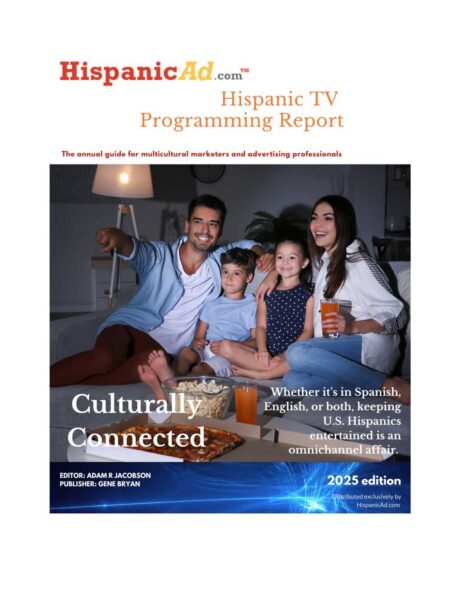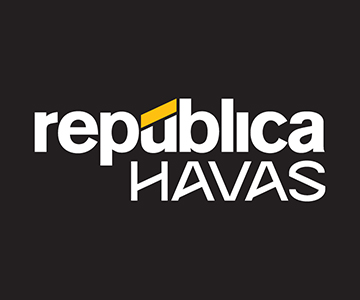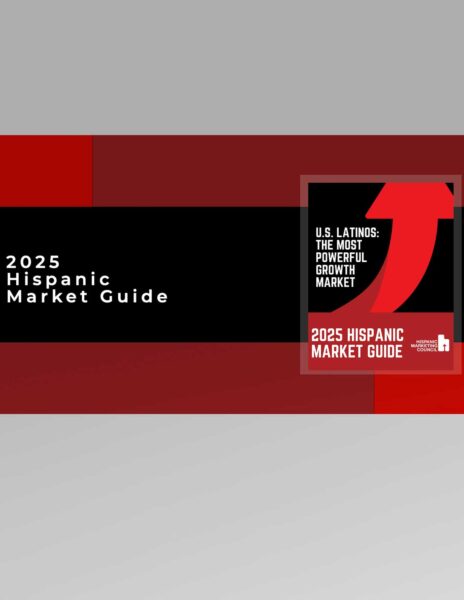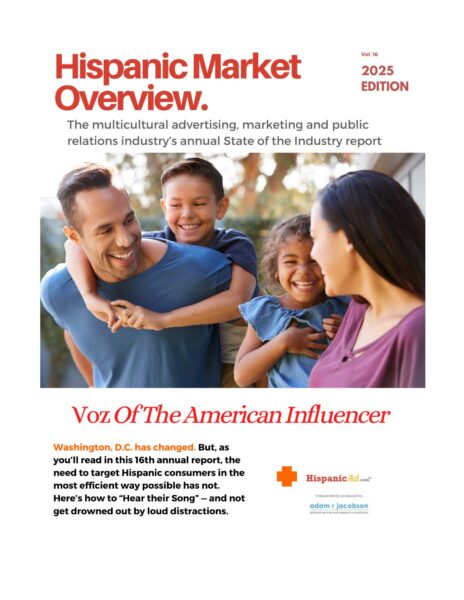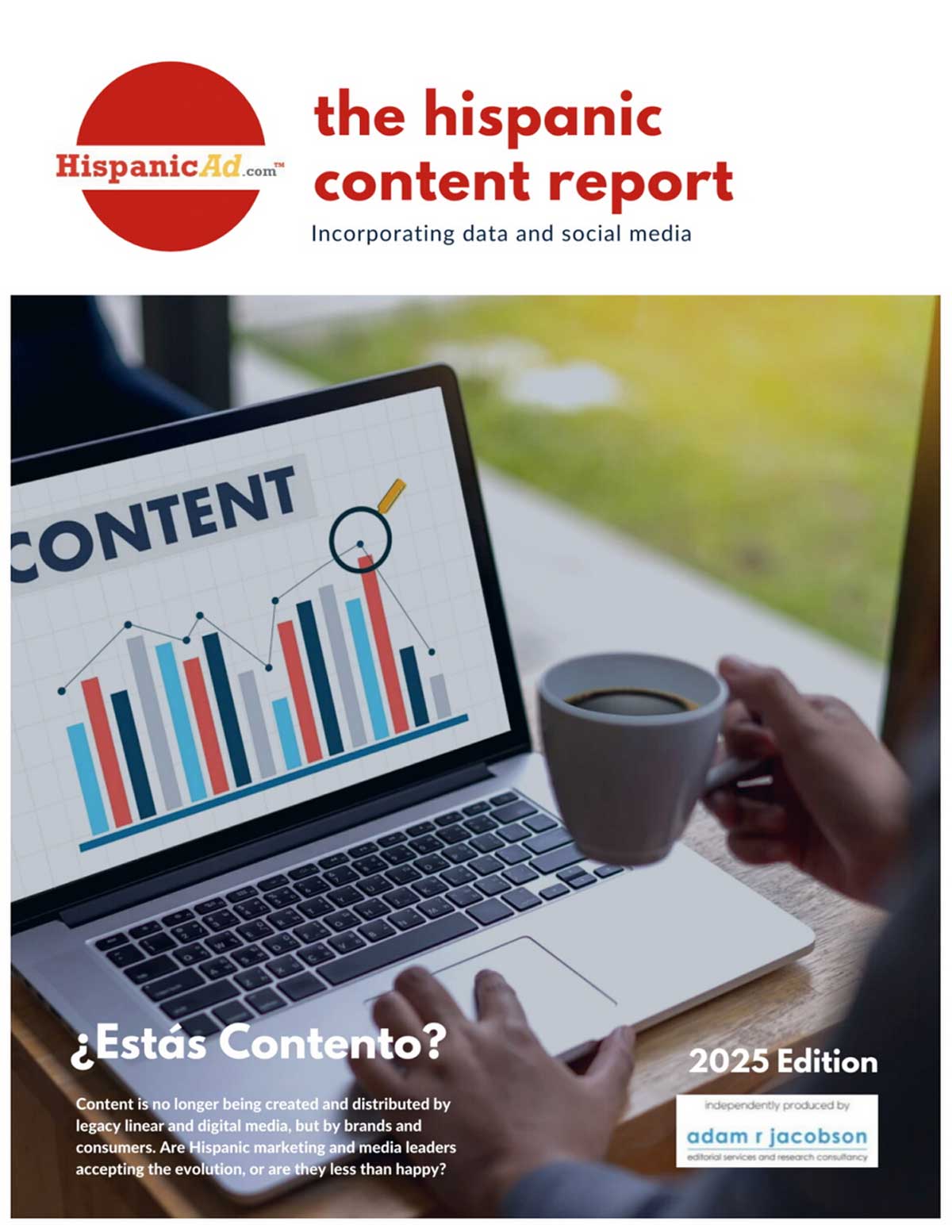Modern CPG product development calls for a new kind of product manager
 Product development and innovation in the consumer-goods industry has never been easy. The involvement of many stakeholders creates a multitude of opportunities for even the most promising innovations to go off track. And competing priorities can cause organizations to lose sight of the initial product and business goals.
Product development and innovation in the consumer-goods industry has never been easy. The involvement of many stakeholders creates a multitude of opportunities for even the most promising innovations to go off track. And competing priorities can cause organizations to lose sight of the initial product and business goals.


 How have the past seven months changed or refocused Hispanic media’s service to its consumers and its clients? By Adam Jacobson – Radio TV Business Report
How have the past seven months changed or refocused Hispanic media’s service to its consumers and its clients? By Adam Jacobson – Radio TV Business Report With the pandemic adding uncertainty for marketers, it’s more important than ever to understand the media landscape. Findings from Kantar’s inaugural Media Reactions 2020 study reveal that marketers lack the understanding and the data they think they need. Nearly half of marketers (48%) — a growing proportion — feel that they don’t have all the data they need to make decisions in their roles. The research also finds that two-thirds are worried about the future and think that an inability to track digital media via cookies will dramatically disrupt the industry — a situation that could further impede marketers’ ability to monitor advertising effectiveness.
With the pandemic adding uncertainty for marketers, it’s more important than ever to understand the media landscape. Findings from Kantar’s inaugural Media Reactions 2020 study reveal that marketers lack the understanding and the data they think they need. Nearly half of marketers (48%) — a growing proportion — feel that they don’t have all the data they need to make decisions in their roles. The research also finds that two-thirds are worried about the future and think that an inability to track digital media via cookies will dramatically disrupt the industry — a situation that could further impede marketers’ ability to monitor advertising effectiveness. Deloitte’s holiday survey turns 35 this year! To honor the long tradition, we’ve added new elements to our report, including a nostalgic podcastfeaturing retail leaders breaking down some of the industry’s biggest trends, and supplemental data from Deloitte’s Insight IQ.
Deloitte’s holiday survey turns 35 this year! To honor the long tradition, we’ve added new elements to our report, including a nostalgic podcastfeaturing retail leaders breaking down some of the industry’s biggest trends, and supplemental data from Deloitte’s Insight IQ. Mozilla and more than 6,000 of our supporters published an open letter to Mark Zuckerberg and Jack Dorsey. Our demand: Turn off Facebook’s Group Recommendations and Twitter’s Trending Topics ahead of the November 3 U.S. elections.
Mozilla and more than 6,000 of our supporters published an open letter to Mark Zuckerberg and Jack Dorsey. Our demand: Turn off Facebook’s Group Recommendations and Twitter’s Trending Topics ahead of the November 3 U.S. elections. Americans have complicated feelings about their relationship with big technology companies. While they have appreciated the impact of technology over recent decades and rely on these companies’ products to communicate, shop and get news, many have also grown critical of the industry and have expressed concerns about the executives who run them.
Americans have complicated feelings about their relationship with big technology companies. While they have appreciated the impact of technology over recent decades and rely on these companies’ products to communicate, shop and get news, many have also grown critical of the industry and have expressed concerns about the executives who run them. A generation, according Howe & Strauss, is defined by a life cycle—or roughly 20 years—and greatly influence a nation’s mood. Thrust between a pandemic, racial justice movements and an election, the United States is in the middle of a social and demographic transformation, making 2020 a critical turning point year. But that is not all…2020 marks the rst time any American generation is a multicultural majority. Today, it is the 0 to 17 segment. By 2028, it will be the under 35 segment, and by 2033, everyone under the age of 50 will be a multicultural majority.
A generation, according Howe & Strauss, is defined by a life cycle—or roughly 20 years—and greatly influence a nation’s mood. Thrust between a pandemic, racial justice movements and an election, the United States is in the middle of a social and demographic transformation, making 2020 a critical turning point year. But that is not all…2020 marks the rst time any American generation is a multicultural majority. Today, it is the 0 to 17 segment. By 2028, it will be the under 35 segment, and by 2033, everyone under the age of 50 will be a multicultural majority. The Aspen Institute reports that if Hispanic business owners were provided the resources to scale at the same rate as white-owned businesses, “an estimated $1.47 trillion dollars could be added to the economy.” What additional challenges are these owners facing during the COVID-19 pandemic, and how can we all help? Hello Alice decided to take a look at those questions in a new report titled “The Impact of COVID-19 on Hispanic & Latinx Business Owners.”
The Aspen Institute reports that if Hispanic business owners were provided the resources to scale at the same rate as white-owned businesses, “an estimated $1.47 trillion dollars could be added to the economy.” What additional challenges are these owners facing during the COVID-19 pandemic, and how can we all help? Hello Alice decided to take a look at those questions in a new report titled “The Impact of COVID-19 on Hispanic & Latinx Business Owners.”  Latinos make up the fastest growing share of entrepreneurs in this country, creating new businesses at multiples the rate of other groups, and contributing more than $700 billion in sales to the economy each year. But, of the approximately 4.65 million Latino-owned businesses (LOBs) in the United States, only three percent of those have scaled; that is, reached $1 million or more in revenue annually.
Latinos make up the fastest growing share of entrepreneurs in this country, creating new businesses at multiples the rate of other groups, and contributing more than $700 billion in sales to the economy each year. But, of the approximately 4.65 million Latino-owned businesses (LOBs) in the United States, only three percent of those have scaled; that is, reached $1 million or more in revenue annually. In 2020, 77% of people say wellness is very or extremely important to them. Yet, consumers are still hungry for more: Hungry for more wellness—80% of people want to improve their wellness; Hungry and expecting—75% feel brands could do more for their wellness; Hungry and frustrated—only 46% feel that brands take their wellness as a priority.
In 2020, 77% of people say wellness is very or extremely important to them. Yet, consumers are still hungry for more: Hungry for more wellness—80% of people want to improve their wellness; Hungry and expecting—75% feel brands could do more for their wellness; Hungry and frustrated—only 46% feel that brands take their wellness as a priority. 2020 is not only a critical turning-point year because of a pandemic, racial and social movements, or an election, 2020 also marks the first time the 0 to 17-year-old segment—or any generation, for that matter—is a multicultural majority. Building on more than 20,500 consumer touchpoints to date, the Culture Marketing Council: The Voice of Hispanic Marketing (CMC) released the first part of a comprehensive study on Gen Z (ages 13 to 17), IT’S TIME: Ready (or Not) for the Multicultural Majority.
2020 is not only a critical turning-point year because of a pandemic, racial and social movements, or an election, 2020 also marks the first time the 0 to 17-year-old segment—or any generation, for that matter—is a multicultural majority. Building on more than 20,500 consumer touchpoints to date, the Culture Marketing Council: The Voice of Hispanic Marketing (CMC) released the first part of a comprehensive study on Gen Z (ages 13 to 17), IT’S TIME: Ready (or Not) for the Multicultural Majority. Advertisers are realizing anew that where their ad appears is just as important as what the ad says.
Advertisers are realizing anew that where their ad appears is just as important as what the ad says. The events of 2020 have been a catalyst for a focus on humanity over technology
The events of 2020 have been a catalyst for a focus on humanity over technology “The Business Case for Relationship Management,” survey was conducted jointly by the ANA and the 4A’s and serves as a follow-up to an April 2019 4A’s report, “Relationship Management Best Practices Guidance.”
“The Business Case for Relationship Management,” survey was conducted jointly by the ANA and the 4A’s and serves as a follow-up to an April 2019 4A’s report, “Relationship Management Best Practices Guidance.” A study on how the pandemic is affecting the world’s leading brands.
A study on how the pandemic is affecting the world’s leading brands. The experience of the fast movers out of the last recession teaches leaders emerging from this one to take thoughtful actions to balance growth, margins, and optionality.
The experience of the fast movers out of the last recession teaches leaders emerging from this one to take thoughtful actions to balance growth, margins, and optionality. In the first half of 2020, revenues from Latin music in the U.S. grew 18.6% to $296.1 million at retail value, the fourth consecutive year of double digit percentage growth. Latin music continued to grow its share of overall U.S. music revenues to 5.2%.
In the first half of 2020, revenues from Latin music in the U.S. grew 18.6% to $296.1 million at retail value, the fourth consecutive year of double digit percentage growth. Latin music continued to grow its share of overall U.S. music revenues to 5.2%.








